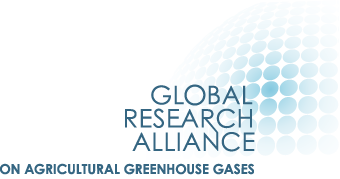Quality assurance and quality control (QA/QC) are important components of IPCC good practice guidance. The following methods are applicable for MRV of mitigation actions and national inventories. General guidance is given in IPCC 2000 and 2006, and specific guidance for QA/QC of livestock inventories is given in IPCC (2006, vol 4 ch. 10, section 10.5.6). The reporting formats for developed country GHG inventories ensure that all developed countries report activities conducted for category-specific QA/QC and verification.
Text Box 6 – IPCC (2006) definitions of QA/QC and verification
“Quality Control (QC) is a system of routine technical activities to assess and maintain the quality of the inventory as it is being compiled. It is performed by personnel compiling the inventory. The QC system is designed to: (i) Provide routine and consistent checks to ensure data integrity, correctness, and completeness; (ii) Identify and address errors and omissions; (iii) Document and archive inventory material and record all QC activities. QC activities include general methods such as accuracy checks on data acquisition and calculations, and the use of approved standardised procedures for emission and removal calculations, measurements, estimating uncertainties, archiving information and reporting. QC activities also include technical reviews of categories, activity data, emission factors, other estimation parameters, and methods.
Quality Assurance (QA) is a planned system of review procedures conducted by personnel not directly involved in the inventory compilation/development process. Reviews, preferably by independent third parties, are performed upon a completed inventory following the implementation of QC procedures. Reviews verify that measurable objectives (data quality objectives, see Section 6.5, QA/QC Plan) were met, ensure that the inventory represents the best possible estimates of emissions and removals given the current state of scientific knowledge and data availability, and support the effectiveness of the QC program.
Verification refers to the collection of activities and procedures conducted during the planning and development, or after completion of an inventory that can help to establish its reliability for the intended applications of the inventory. For the purposes of this guidance, verification refers specifically to those methods that are external to the inventory and apply independent data, including comparisons with inventory estimates made by other bodies or through alternative methods. Verification activities may be constituents of both QA and QC, depending on the methods used and the stage at which independent information is used.
Source: IPCC (2006) Vol 1 Ch 6
Livestock components of national inventories are subject to general QA/QC activities that are applied to the whole inventory (referred to in IPCC 2000 as Tier 1 activities), while source-specific QA/QC is referred to as Tier 2 activities. Source-specific QA/QC activities are generally applied to both activity data and emission factors. For livestock emission sources, common QA/QC methods include the following:
Activity data:
- Comparison between alternative domestic data sources (e.g. comparing 10-year livestock population census data with 2-3 year farm survey data)
- Comparison of national with FAO or other databases (Inventory practice: Estimating livestock population time series in Romania)
Emission factors:
- Comparison with neighbouring countries and IPCC default values (Inventory practice: Verification of emission factors in South Africa; Inventory practice: QA and verification in Australia’s GHG inventory)
- Comparison with published research data (Inventory practice: QA and verification in Australia’s GHG inventory)
- Analysis of IEF trend over time (Inventory practice: Verification of Denmark’s inventory inputs and results)
- Conversion of estimated gross energy to kg feed and comparison with animal weight (Inventory practice: QA and verification in Australia’s GHG inventory)
A variety of tools and institutional arrangements for inventory compilation and review are used in QA/QC activities, including:
- Internal data checks (Inventory practice: QA/QC in Poland’s inventory, Inventory practice: QA/QC in Norway’s GHG inventory, Inventory practice: QA/QC in The Netherlands) often facilitated by data management systems
- Commissioned reviews (Country case studies: New Zealand & Sweden), and
- External reviews.

